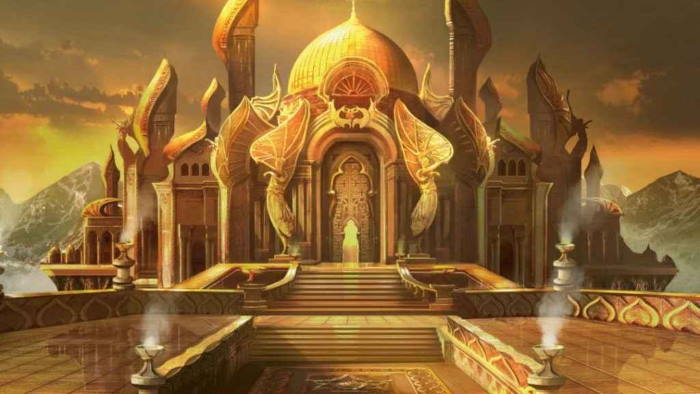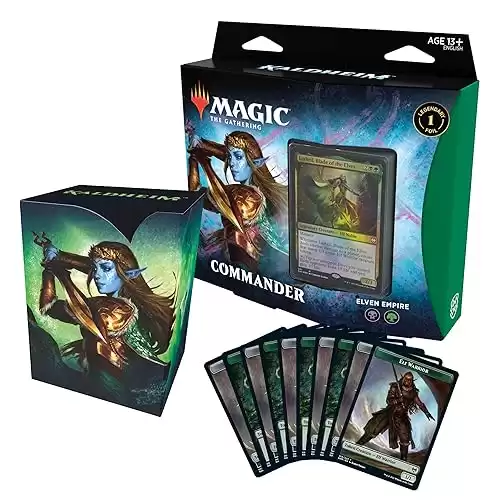You’ve picked a commander or perhaps you want to upgrade a preconstructed commander deck you bought from the store. You have all of your cards laying out, well over 100 cards. How do you make the right cuts? I have been playing commander for years now and I still sometimes make mistakes when deckbuilding. I’m here to tell you that you are not alone and that we all make mistakes. In this article I’ll talk about 5 common commander deck building mistakes and how you should avoid making them.
Table Of Contents
- Cutting Lands For Other Cards
- Not Enough Mana Rocks or Ramp
- Where’s Your Card Advantage?
- Better Deck Synergy
- Reaction and Interaction
- Conclusion
1. Cutting Lands For Other Cards
This is the most common Commander deck-building mistake. You are so close to being done with the deck. You think to yourself, I just need to cut one or two more cards, do I really need 37 lands? So you cut two lands. Later you want to add another cool card you opened out of a booster pack, so you cut another land, and so on. Pretty soon you find yourself continually short on lands.
At first, you might just blame being mana screwed but in reality there just aren’t enough lands in your deck. Your commander costs 7 mana and with 34 lands in the deck you just aren’t drawing the lands consistently. On top of that, some of your lands might not provide mana, like Evolving Wilds or Dark Depths. Evolving Wilds will get the right land for you but if you already have 34 lands, it just feels like you have even less mana.
How Many Lands Does a Commander Deck Need?
A commander deck is made up of about 40 lands and it is tempting to cut them for other fun cards. Just like other formats, paying attention to the mana curve is important when you are building a commander deck.
For example, if you are playing a commander that costs four mana and most of your cards are four mana or under, you don’t need as many lands as a deck that has a seven-cost commander.
Ideally, you will want to play your commander as soon as possible, and drawing enough lands to make that happen is essential. In multi-color decks, the right color of lands is also important. Lands like Command Tower or City of Brass help to fix this issue.
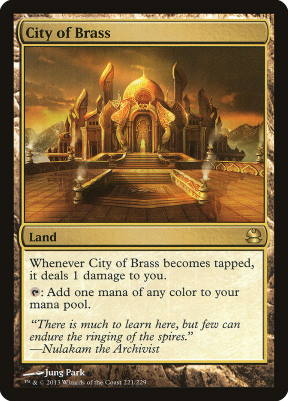
Commander decks have a sweet spot of lands around the 36 to 39 range. Less than that and your deck won’t work as consistently as you would like it to. There are exceptions of course so use your best judgment when building a deck. Look to utility lands that do something in addition to being a land.
Rogue’s Passage is a great example of this. Some decks might call for more lands and others perhaps less but 36 to 39 is a good starting point. Before you cut a land out of your deck for another card, see if a utility land does something similar and if it could be the replacement instead. Of all the common mistakes, this might be the most important to avoid.
2. Not Enough Mana Rocks or Ramp
Just like with cutting lands, new deck builders will often cut out or perhaps not include ways to make more mana or search for the right mana. We talked about getting your commander out as soon as you can but sometimes on curve is just not fast enough. It’s usually better to get your commander out one or two turns before you normally could.
Mana rocks like Sol Ring or Izzet Signet can help you cast spells ahead of schedule. Spells like Rampant Growth (the card that the term Ramp comes from) and Farseek can help to get the right colors of mana out on the field while accelerating your deck.
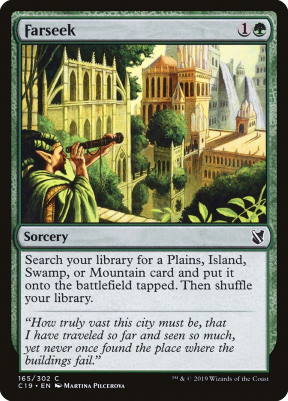
Even creatures like Llanowar Elves or Iron Myr can help provide that extra mana you need. Sometimes you might even use temporary mana to get a head start on your enemies. Cards like Dark Ritual or Seething Song could let you play just the card you need to be way ahead. Your deck needs enough of these cards to make sure your commander or perhaps your general plan of victory is executed as soon as possible.
How Many Ramp and Mana Rocks Do I need?
If you want to avoid this deck-building mistake, you should have about 10 ramp and mana rocks in your deck. In multi-color decks, this becomes even more important just to make sure you have the right colors when you need them.
Mana rocks like Talisman of Conviction or Darksteel Ingot can help to make sure you have the right colors. Ramp spells that get more than one land, like Cultivate or Harrow will ramp and fix colors. Birds of Paradise or Opaline Unicorn are creatures that tap for any color of mana. Using these tools will make sure that you not only have enough mana to cast your spells but that you have the right colors when you need them.
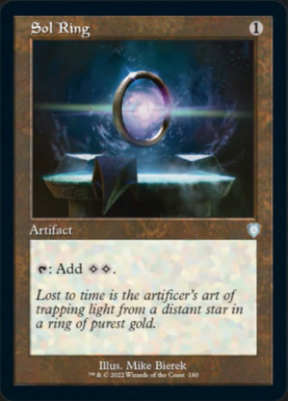
Sometimes it is hard to leave enough room, but mana ramp is necessary to keep up with other players or sometimes stay one step ahead. Around ten cards in your deck need to be some form of mana acceleration to get out the cards you need. I’d even say that ramp is the only acceptable time to cut a land and the ratio is two rocks or ramp per mana. Okay now we have enough lands, and enough ways to produce more mana but I ran out of cards!
Check out our in-depth guide to the best mana rocks in mtg for a deeper dive on this topic.
3. Where’s Your Card Advantage?
Card advantage is something that is often forgotten in the deck-building process and another common Commander deck-building mistake. Drawing cards allows you to get the pieces of your combo, answers to your problems, or a game-winning card, faster.
There are many types of card advantage and decks may want certain kinds that fit the theme of the deck. Card draw is the best of these but looting, rummaging, self-milling, scrying, and Impulse Draw are all valid ways to get the ball rolling with your deck. Regardless of what they are, you’ll want at least 10 sources of card draw in your EDH decks.
What are good ways to get card draw?
There are lots of ways to draw cards, some more impactful than others. One-time draw spells can be useful in some decks like Tezzeret’s Gambit or Sign In Blood. Enchantments that draw extra cards each turn are fantastic like Phyrexian Arena or Sylvan Library. The list goes on.
Looting and Rummaging are each one side of the same coin. Looting is drawing a card and then discarding a card and Rummaging is the opposite. A good example of these effects is Faithless Looting or Rummaging Goblin. Self-milling or Dredging put more cards into your graveyard. Decks that like to reanimate or pull cards from the graveyard may want effects like Life from the Loam or Millikin.
Scrying is not as good as card draw but it will let you set up future draws. Cards that draw and scry can be really handy, like Preordain or Read the Bones. Cards that allow Impulse drawing are Dark-Dweller Oracle or Stromkirk Occultist.
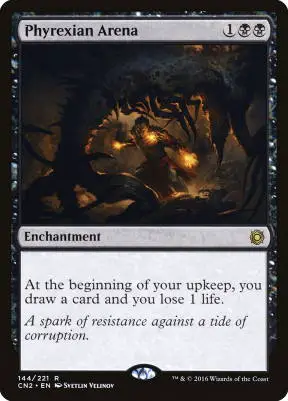
No matter how you draw cards, getting to the rest of your cards faster is always a good thing. Having around ten ways to draw cards can keep cards flowing throughout the game. It might be tempting to cut card draw in favor of better cards but you will want to be able to get those cards.
Drawing cards when you need more cards is essential to keeping ahead of your opponents. It helps if the cards you are drawing have good synergy with one another. Speaking of deck synergy…
4. Better Deck Synergy
Deck synergy is important to streamline your deck and lacking it is one of the more common deck building mistakes in Commander. You could build your deck with just good cards but cards that work together in tandem will make your deck really shine. Tribal decks are the easiest in this aspect. Lathril, Blade of the Elves, wants more elves. Krenko, Mob Boss, wants more goblins.
Applying what we’ve talked about with Lathril, you might consider mana ramp cards like Farhaven Elf or Elvish Mystic. Card draw effects like Beast Whisperer or Miara, Thorn of the Glade. These elves work with your commander while also providing the ramp and card draw you need to keep playing elves. The more elves on the field, the easier it is to activate Lathril’s ability.
Not all decks are tribal however, some decks have different goals in mind. Nekusar, The Mindrazer would like your opponents to draw cards, punishing them for it. In this style of deck, you would run cards like Howling Mine or Spiteful Visions.
Omnath, Locus of Creation wants more mana ramp cards like Kodoma’s Reach or Exploration. These cards will help trigger Locus of Creation’s Landfall effect, something you will want to do multiple times a turn. Different styles of decks want different cards and keeping most of your deck on theme will help with the consistency of your gameplay.
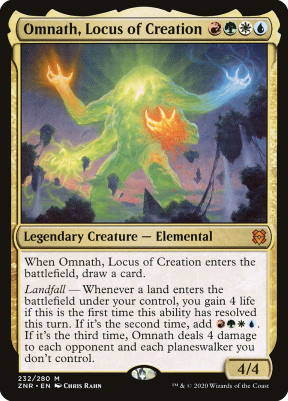
How Should I Look to Synergize My Commander With My Deck?
Your commander should also synergize with what you are trying to do with your deck. Not all commanders can do this as effectively as others but it is something to consider while deck building. Instead of Lathril, try Abomination of Llanowar. Abomination of Llanowar gets stronger with the more elves in play and in your graveyard.
Even if all of your elves are killed, your commander is still strong or even stronger because of it. Picking the right commander that is the right fit for your deck is an important part of the deck-building process that shouldn’t be overlooked. Now you’re playing the right cards but your opponents are faster still or perhaps removing all of your elves. What should I do?
5. Reaction and Interaction
The last mistake is reaction and interactions. Sometimes playing the right cards isn’t enough. Your opponent could have a faster deck or maybe they are countering all of your good cards. You need to stop them and protect what you have going on.
Cards like Crux of Fate or Beast Within can slow an opponent down. Boros Charm or Heroic Intervention can protect your creatures. Counterspell or Dovin’s Veto can stop a game winning card from being played. Being able to react to cards being played is an integral part of Magic: the Gathering.
You want to have a mix of removal and protection to keep the tempo of the game in your favor. Having a
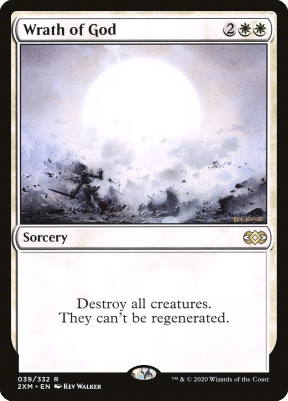
One of the reasons you are drawing cards is to make sure you have the right answers to threats. Cards that destroy artifacts, enchantments, creatures, and sometimes lands are important to have in your deck. If you can get them to synergize with your deck, all the better.
People often overlook cards like these and then complain about “overpowered” cards that could easily be countered or destroyed. There is a reason players will often remind others that something dies to Doom Blade. Even the biggest threat can be taken down with the right card or cards.
Your opponent has a Gaea’s Cradle? Strip Mine or Acidic Slime will make short work of that. Vedalken Orrery[c]? [c]Oxidize or Ancient Grudge and that’s no more. Indestructible nonsense? Toxic Deluge or Dismember are good answers. Remember your opponents are trying to win as well, sometimes the only choice is to slow them down.
Overall, the general rule of thumb is that you want 10-12 single target removal spells and 3-4
Conclusion
All of these tips can help avoid common commander deck-building mistakes. The right amount of land, mana ramp, card draw, synergy, and interaction will make sure all of your decks are better. These are all things that deck builders seem to forget so perhaps next time you are building a deck, you will remember these mistakes and avoid making them yourself.
There are other important things to remember when deck building but these topics are the basics of great deck building. No one can master deck construction overnight. Buying and dismantling a Preconstructed deck can help you figure out what goes into building a deck.
Building from the ground up is rewarding but sometimes you can forget to put in mana ramp or interaction. Halfway through you might forget synergy or perhaps go a different direction entirely. Remembering all of the basic mistakes made in this article will help you build a better deck the next time you face your friends on the battlefield.
